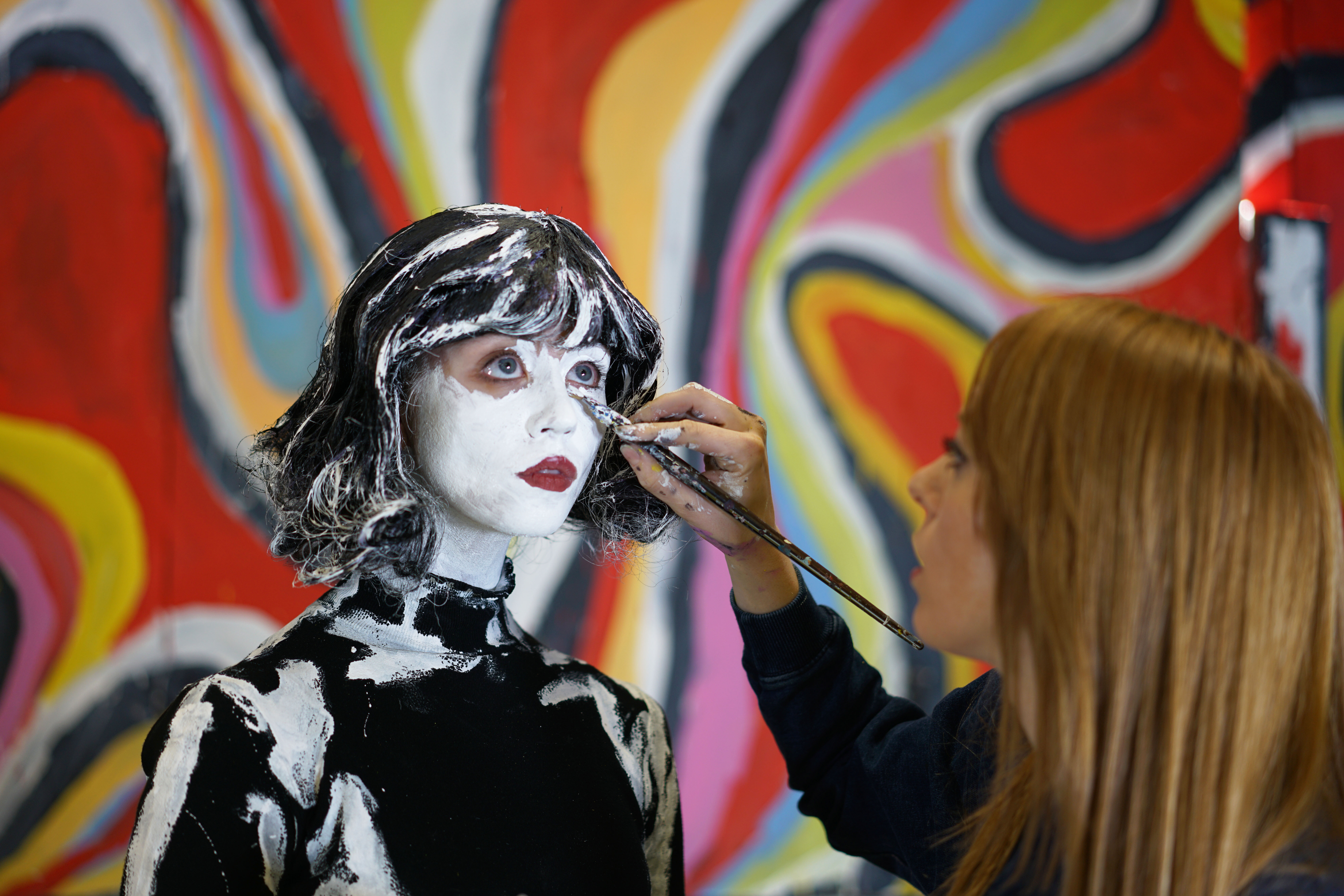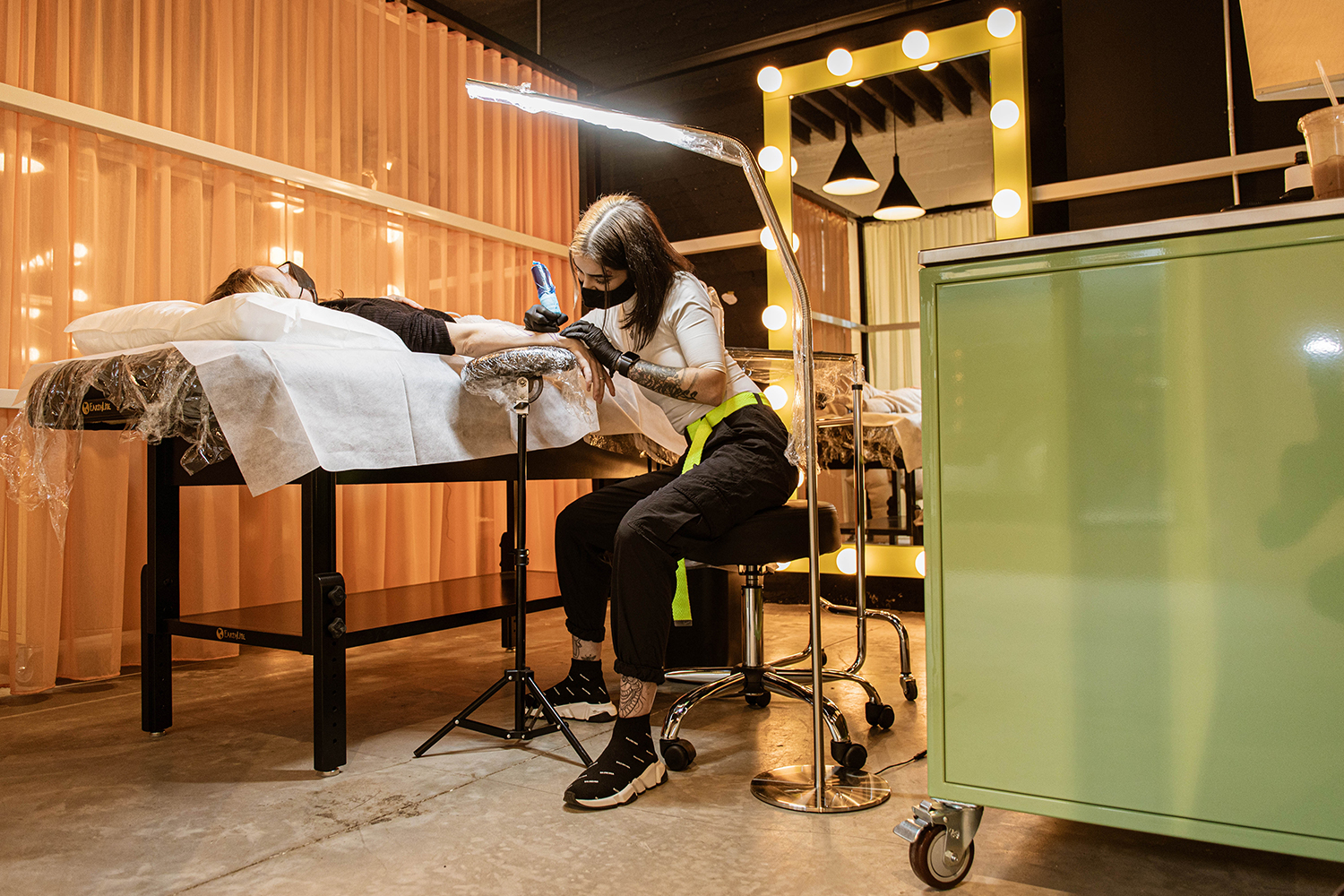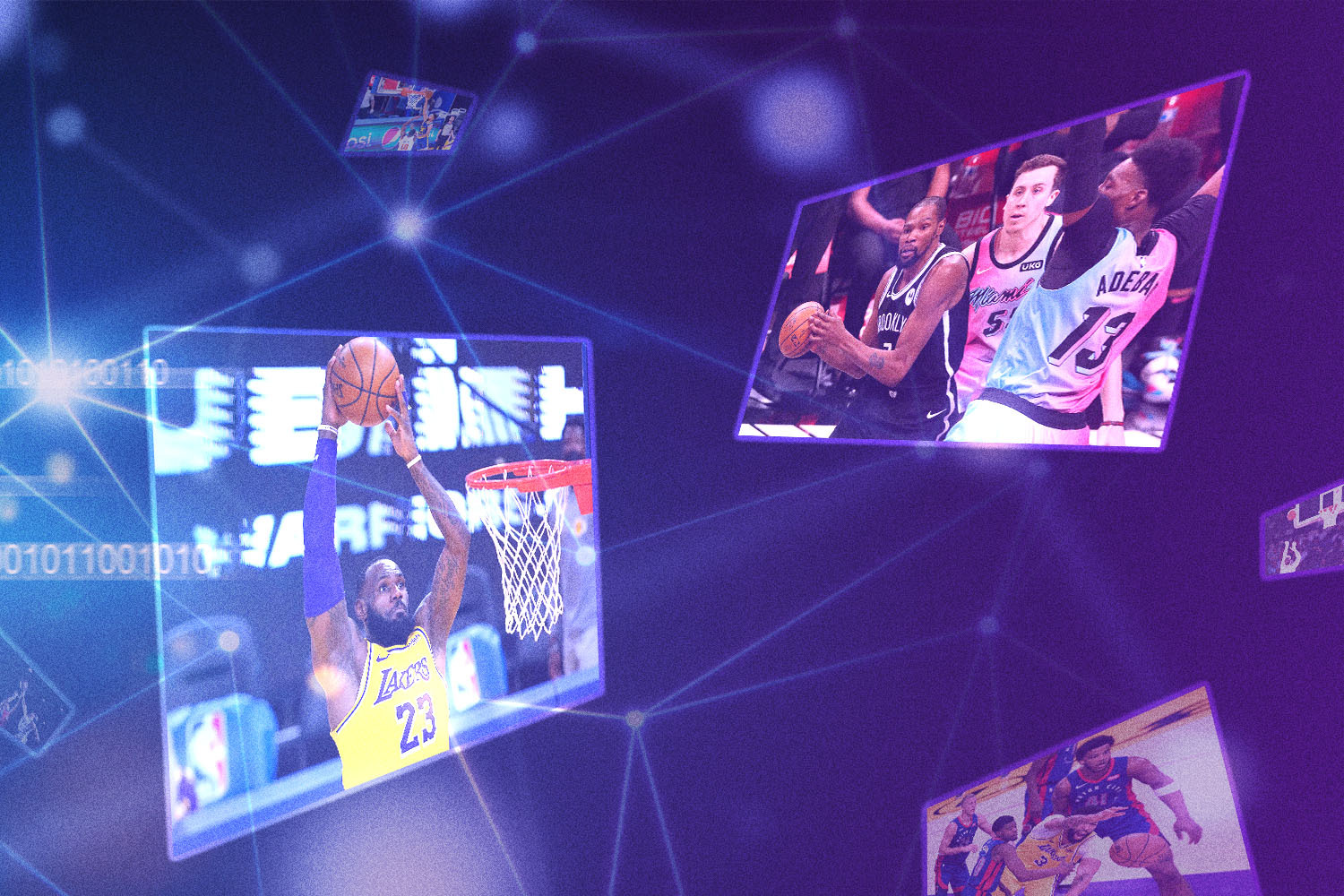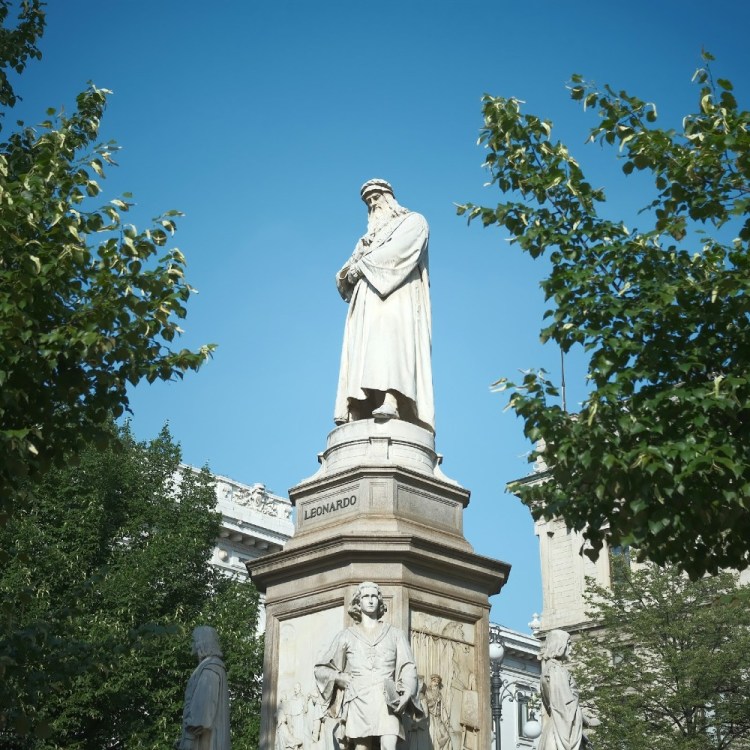
By Danny Agnew
Hero image: Joshua Spencer
While referring to Scott Campbell as simply a “tattoo artist” would be bordering on the reductive — he works in a variety of media, has collaborated with the likes of Louis Vuitton and Hennessy, and regularly exhibits at galleries all over the world — the multi-hyphenate certainly wouldn’t bristle at the appellation. With more than two decades in the industry, the reverential admiration of tattoo enthusiasts and artists the world over and a roster of celebrity clients that includes Robert Downey Jr., Courtney Love and Sting, he’s widely regarded as one of the best to ever pick up a tattoo machine, and will also happily espouse on his humble beginnings scratching out stick-and-pokes under the desk in high-school art class (more on that in a bit).
If anything, Campbell is looking to elevate the art form of tattooing itself along with his own artistic profile. Case in point: All Our Best, a bold new gambit in collaboration with a cabal of world-famous tattoo artists who, like Campbell, are betting that the NFT movement will usher in the next phase of their industry and finally bring tattooing into the world of fine art.
Launching on 7/23, All Our Best is essentially a gallery marketplace site where the digital works of Campbell — along with fellow legendary artists Mr. Cartoon, Grime, Dr. Woo, Tati Compton and Sean From Texas — will be sold at auction as NFTs with the included option (but not requirement) for the artist to ink the work on the purchaser’s skin.
We sat down with Campbell to discuss his history in the industry, the origins of this provocative new play, where he sees tattooing going in the future, and the one piece of advice he’d give to someone considering their first tattoo.
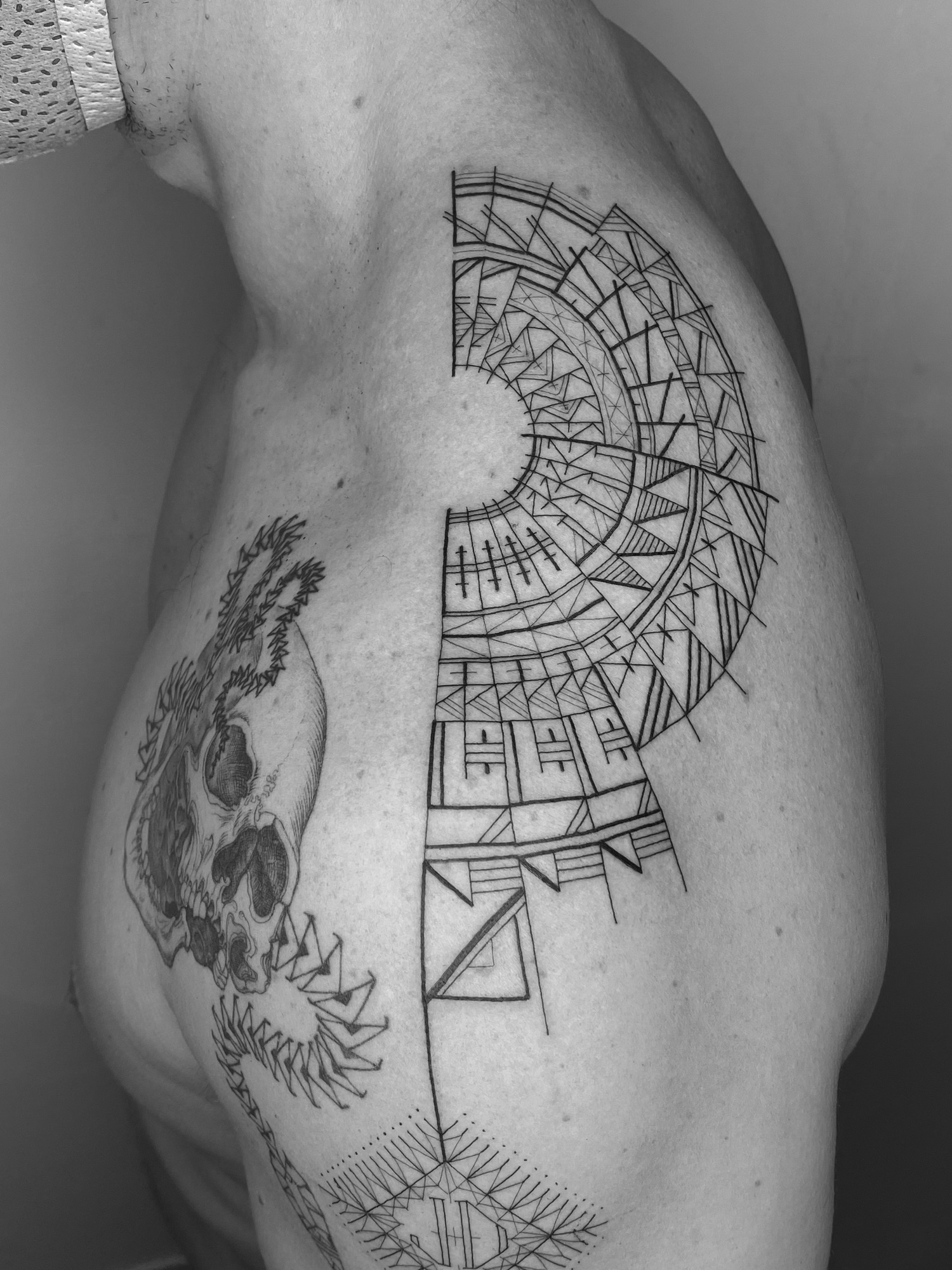
InsideHook: So before we get into the current stuff, let’s dive into your history a little bit. What is the first tattoo you ever gave, and the first tattoo you ever got?
Scott Campbell: First tattoo I ever got, I was 16 years old and I was living in Houston, Texas. I had 20 dollars in my pocket and a fake ID. I went to a place called Dragon Mike and Tiger John’s, which is just this grimy biker shop. They didn’t even ask me for my ID, and I was like “I got 20 bucks. What can I get?” And I remember he was just smoking a cigarette watching The Price Is Right at the tattoo station, and he was like, “You can get a skull, or you can get a butterfly.” It was one of those rooms where I kind of understood that if I said butterfly I was probably getting beat up, so I was like, “All right, I’ll pick a skull.” So he tattooed this little skull on my leg, and I was thrilled. I just wanted a tattoo, I really just wanted to do that, to have that experience. Obviously tattooing has evolved a lot since then, thankfully.
And then the first tattoo I ever did … I mean, I did some little stick and poke things underneath the desk in art class in high school. I pray that pictures of those are never released. But the first one that I actually did with tattoo machines with a sense of purpose was this kid — we were both 18, 19 years old in San Francisco, and I was working at a coffee shop. One of my coworkers, he had always seen me drawing and stuff, and he was like, “I want you to tattoo me.” And I was like, “No, you don’t. I’ll draw a picture and you take it to somebody who knows what they’re doing.” He says, “No, no. I want your hands to do it.”
His dad was a paleontologist, and he wanted one of his dad’s favorite fossils — this little trilobite that he had grown up with — tattooed on him. So I pushed back on him, I was like, “No, dude. I don’t know how to do that.” But he went and he bought a tattoo machine, bought the equipment and put it in my hands. He’s like, “Here. I just bought you this stuff. To pay me back I want you to tattoo me with it.”
That’s a dope friend.
Yeah, it was really beautiful. It was one of those moments where somebody in my life believed in me more than I believed in me, and it really jump started everything.
Shout out to that dude. I gotta say though that while you might not be super proud of them, those people from your high school art class can claim that their crappy stick and pokes were done by one of the most famous tattoo artists in the world. Kinda cool for them.
They might wish they had waited a few years, but … yeah. [laughs] “Oh, he got better? I should have held out.”
“I was too early! God damn it!”
“I want 2010 Scott, I didn’t want 1992 Scott!”
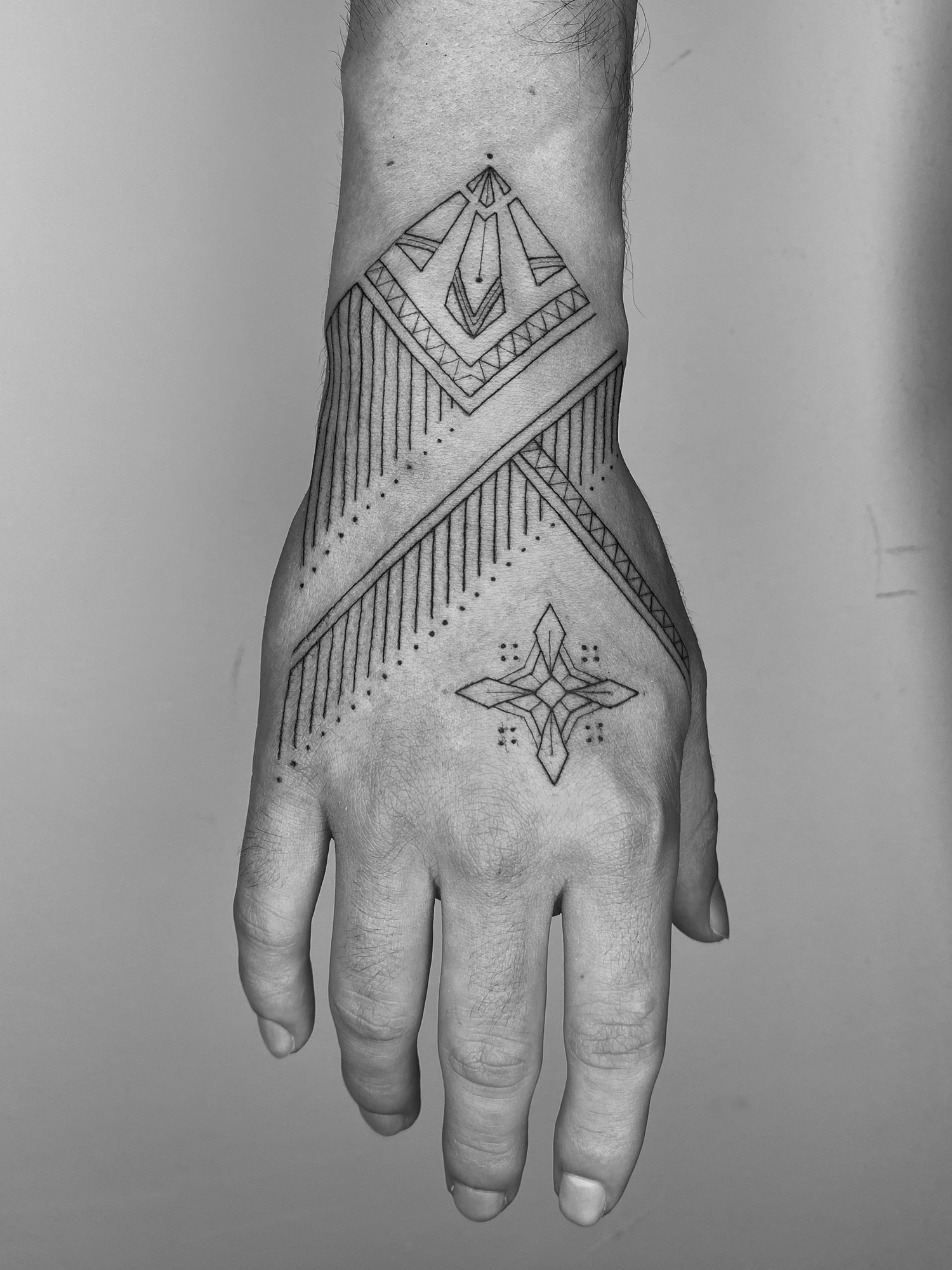
Ok so speaking of changes in the world of tattoos, what do you think the biggest changes have been in the industry over the time that you’ve been a part of it?
Definitely Instagram. Instagram changed everything. I mean, there’s different technological advances and improvements in the tools and the pigments … things that have made the actual application process more accurate and go more smoothly. But culturally, Instagram flipped everything upside down. In a good way, but it definitely shifted things. Tattooing used to exist in these geographic bubbles because people in a city would get tattooed, there would be a couple tattoo artists in town, people would see something one guy did and then ask the other guy for info on it, and it would go back and forth in this conversation within the community.
So these little individual styles emerged in different geographies. There’s very much an L.A. style, a New York style, a European style, a Japanese style. Then all of a sudden Instagram happened and instead of a local conversation it was a global conversation. So I’ll do a tattoo one day, and then some kid in Malaysia will post his version of that like, “Oh, that was a cool idea. I’m going to take that and pull it in this direction.” Creatively, you suddenly had access to all these artists that you would previously have had to live in that city in order to see their work, which is exciting.
Also, it really democratized tattooing, because it used to be that tattoo shops themselves were the gatekeepers for individual careers. If you got a job at a shop with a really good reputation it could make your career. Now with Instagram, people have direct access to the artist. And the artists get exposure to everyone, so you see a lot more artists working out of private studios and things rather than these big tattoo shops with 10, 20 artists working out of them.
Do you think there are any drawbacks to Instagram’s influence on the community?
There’s a lot of old-schoolers that will grumble just because it’s such an old boy’s club industry. There’s people that don’t like change and they don’t like the exposure of it, but I think it’s just because they’re insecure in what they do. In democratizing it, it’s really demand-driven now. There’s this old-school tattoo mentality that we’re hopefully evolving past, but you still see some relics of it from when tattooing was a very closed industry. If you went into a tattoo shop in the ‘80s like, “Hey, I want to learn how to tattoo,” they would take you in the back and break your thumbs and tell you to fuck off.
It used to be that tattoo supply companies were very selective about who they sold to. All these tattoo artists were scared that somebody else was going to learn their trick and steal their business. I think the way to protect yourself from someone stealing your trick and stealing your business is to just have your creativity be your trick and it’s unstealable. If you have good ideas, nobody can touch that. So I think it’s really given power to people who have new and interesting ideas versus the people who are just grandfathered in. I think that’s a good thing.
You’ve had this very interesting career trajectory with a transition into these different types of art. Was that something that was deliberate, or did it just sort of happen organically and one day you looked up and you were in a gallery like “Oh fuck, how did I get here?”
It was definitely deliberate in that … I got into tattooing because I’m decent at drawing pictures and I needed to figure out a way to feed myself by drawing pictures. I was tattooing in New York in the early 2000s and I had never had the audacity to call myself an artist, mostly because I’d go to these museum shows and gallery shows and they always had this synopsis of the work on the wall. “Oh, this is the conversation that this artist is having with this, blah blah blah.” I was like, “Well, I’ve never woken up with a mission statement. I’ve never had that clear a sense of purpose.” I thought the art world was this community of people who were just more articulate and had better posture than me. I was like, “I’m not invited to that club.” And then I started tattooing all these people that I had read about in art history books and really gaining their trust and respect.
It meant a lot to me that these people that were hugely influential in the fine art world valued my opinion and my perspective, and that they really enjoyed what I was making. So that gave me a bit of confidence and I became envious of the life that their work had. It was one of the first times I felt like I bumped up against the ceiling of tattooing. It’s like, “My hands know how to do this better than anything else, but how do I elaborate on it? How do I give what I’m making a larger life?” So I started taking a lot of the narratives and symbols of tattoos and translating them to painting and sculpture and other mediums as a way of giving them a larger life and reaching more people with it. It was very much a conscious choice, not to switch lanes necessarily, but add additional lanes to what I was doing.
I feel like that idea of giving the art a different degree of longevity, or different type of longevity, is a really nice segue into the All Our Best project. But first, I need to ask a question that I ask everyone when we discuss NFTs because I want to compare everyone’s answers like 50 years from now: How would you explain an NFT to a child?
The way I’ve explained it where I’ve seen it click in people’s eyes the most is that an NFT is basically a digital baseball card. You have an image a little video or something like that, and it’s a unique thing that exists digitally. Because all the same questions apply. Why is a Mickey Mantle baseball card collectible? Well, because people have an emotional attachment to Mickey Mantle. It’s like, “But you could just photocopy it.” Yeah, you could photocopy it, but then it wouldn’t be the officially licensed Mickey Mantle baseball card. And then it’s like, “Oh, if I own that baseball card, can I make T-shirts and mugs out of it?” No. You don’t own the rights to it, but you own a unique, collectible thing. And the value of that is tethered to the cultural impact, and the emotional connection that people have with that person.
I think that’s a fantastic way to put it. I think the trouble that a lot of people have — certainly that I had — is wrapping their head around the idea of the thing being digital rather something tactile. Which I think is ultimately just a huge cultural shift that we’re experiencing right now in that younger people don’t give a fuck if the thing is physical or if it’s digital.
Yeah, and we’re literally seeing our physical world migrate into digital versions of it, and that digital version being just as valid — in some cases more valid — than the physical one. There are artists who are like, “Oh, I’m going to sell NFT versions of my paintings and drawings, and the NFT version is going to be more valuable than the physical version.” Simply because of the ease of transaction. It’s easier to sell it on the secondary market, whereas selling a painting on a secondary market is more complicated. That ease of secondary market transaction makes it more valuable in the secondary market because you can access more demand.
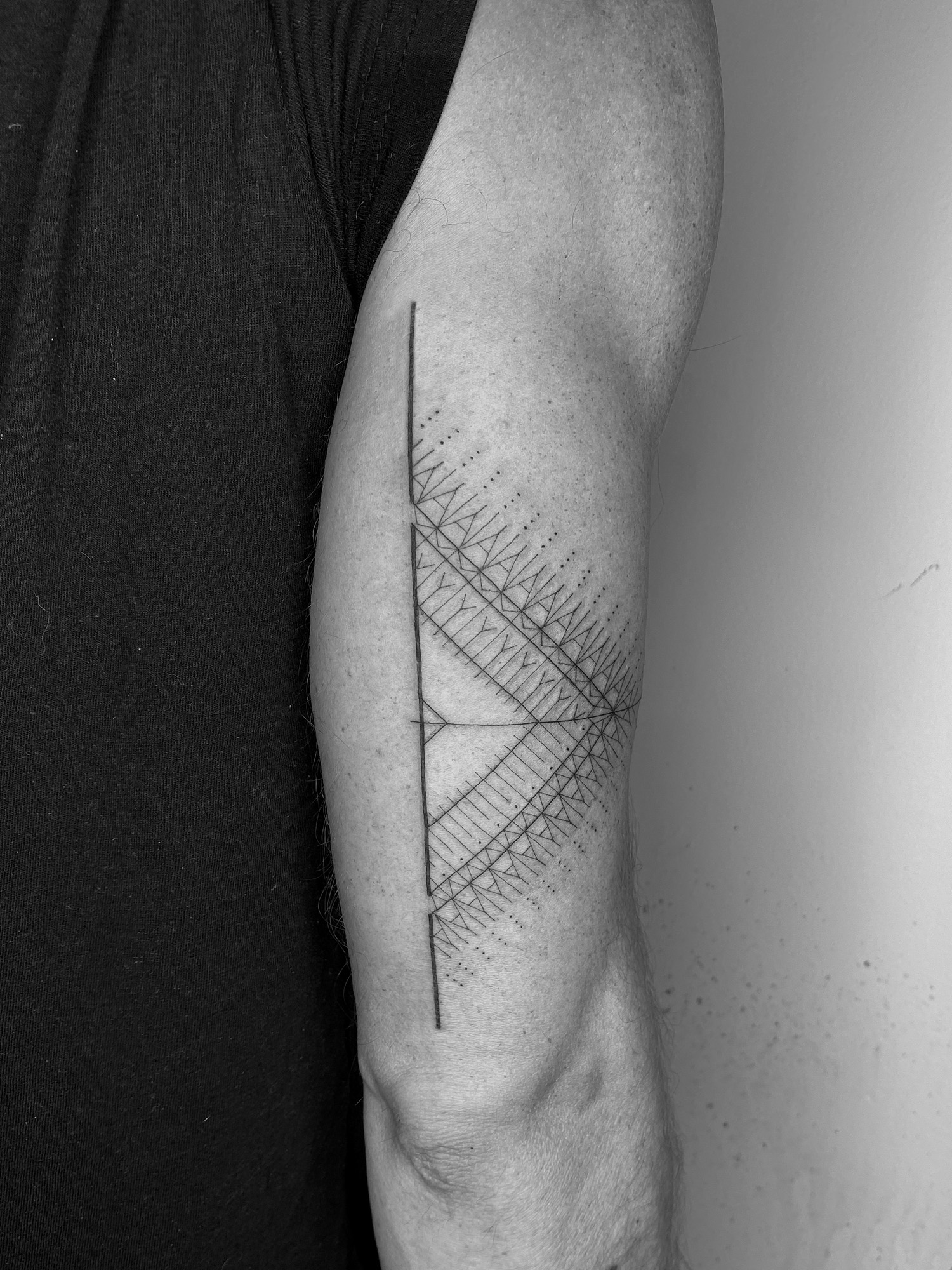
So was this a thing where the second you saw the technology starting to emerge, you were thinking, “Oh, shit. That will totally work for tattoo art”? Was there a catalytic moment?
No. There was a moment with my buddy, Ian Rogers. I don’t know if you’re familiar with Ian — in most rooms he walks into, he’s the smartest guy in the room. He’s really been at the forefront of culture and technology for a long time. He was the first person to ever put music on the internet with the Beastie Boys back in the ‘90s. He started Beats with Jimmy and Dre, he founded Apple Music, he runs all of digital for LVMH Group out of Paris. And now he’s shifting and focusing on crypto stuff with his company Ledger. He’s an old buddy of mine and we’ve always bounced ideas back and forth, and he called me and left a five-minute voicemail on my machine. He was like, “Okay, it’s the future. Listen to me. NFT tattoos.” And I literally hung up. I was like, “Nope. I’m going to go make my kid’s sandwich. I’m not going to even talk about that.”
The next day I was like, “Alright, let me listen.” It took me five tries to make it through this entire voicemail. By the time I got to the end I was like, “Holy shit, he’s right.” It solves so many problems that I’ve struggled with with tattooing throughout the years. I’ve been on the fence as to whether or not to really subscribe to collecting digital artwork, but now I’m with it. Selling artwork that’s purely digital is one thing, but that value has already been proven. That’s happening in the world, it’s not a matter of opinion anymore. Yes, it is proven that there is a real collectible value in digital artworks. But with tattooing specifically, I think it stands to shift our culture more than other mediums quite significantly.
How so?
Just in that a tattoo can have a larger life now. There’s a community of tattoo artists that are pretty collectible. People fly all over the world and pay way too much money for me to tattoo them, and at the end of the day all they’re getting is bragging rights and an Instagram post. There’s nothing real that they take away from that. Whereas if they come and get a tattoo from me and this digital baseball card of their tattoo as a sort of authentication, as a certificate of authenticity that comes with it, then it has a real thing. That asset actually has secondary market value and is tradable and is licensed by the artist, and that image then has a larger life than just their arm. Their kids can inherit those tattoos and get them themselves.
The biggest shift is changing what we’re offering people, or how we’re valuing what we offer people, shifting it from the application process to the image. Right now we charge you for hours in our chair. So we’re creating artwork, but we’re charging you by how long it takes to apply it to your arm. But what if we shift that, or say, “I’m going to sell you this image, and it’s a unique thing, and you own it. And with it comes the option to get it tattooed by me.”
Think of the tattoo as the painting and the NFT as the signature. That makes it valuable; you could have a drawing from Picasso, but if it’s not signed, it’s not really worth that much because you can’t prove it. With tattoos … there are people working with Dr. Woo. He’s probably one of the most copied tattoo artists out there. People go and pay a bunch of money for his tattoos, but then he’ll post it and seven people in Arkansas will get it tattooed also. At least now you have a certificate, you have a unique thing that comes from him and his studio authenticating it. I think in shifting the value from the application process to the image, so much changes and there are so many implications down the line from that.
Let’s talk a little bit about the intersection of value and time as it pertains to tattooing. I feel like this is something that you’ve been banging the drum about in previous conversations. It is funny how tattooing is one of the only art forms where it’s transactional in that way. “On the clock,” so to speak.
Yeah, and that’s because of the finite nature of it. There’s been no resale value for a tattoo until now. Just that statement, “My tattoos will have resale value.” What the fuck? That’s crazy. If you think about what that means for those tattoos, that really is the obstacle that has been preventing tattooing from being accepted as a real fine art. I don’t love it, but it’s true. The resale of it is the reason why Sotheby’s doesn’t give a shit about tattooing. The notion that now I’m selling you that design, and that design can be resold if you want, is a big deal.
It de-emphasizes the version that’s on your arm and places the emphasis on the actual asset. Because at the end of the day, even though people talk about tattooing as being “permanent,” it’s an ephemeral medium because those tattoos, they get sunburned and run over by buses and all kinds of shit. Whereas if you have a digital asset, that’s the stuff that your kids will hang onto and say, “Oh, yeah, that blurry thing on my 80 year-old dad’s arm? This is what that was, and this is what that represented.” This is an actual thing that is collectible to people who have an emotional attachment to that artist and their work.
So speaking of this community of what you call “collectible” artists — this project has you, Cartoon, Grime, Woo, Tati, Sean. This is basically a Murderer’s Row of tattoo talent. How did you guys all come together on this project? I’m sort of under the impression that you were the Pied Piper of this NFT shit and collected everybody else.
A bit, yeah. But I think every tattooer wants to be recognized as a fine artist. The cultural impact that tattooing has had in the past 30 years is immeasurable. Reality shows, fashion collaborations, all this stuff is trying to figure out how to take the energy and the vitality of tattooing and rub it up against a different product and sell it or make a fucking reality show of it. I think being able to give permanent, archival value to the tattoos themselves and the artwork we’re creating every day is incredibly democratizing for us artists. Because the emotional attachment that people have to our artwork is there and it’s present just as much as it’s present in people’s loyalty to a songwriter or a painter. Adding a layer to what we do so that it can have a larger life is really exciting.
Was this as simple as you reaching out to your homies and being like, “Hey, what do you think about this?”
Basically, yeah. I was like, “Guys, this is the future. I see it plain as day. This is going to change our industry, and there’s a moment here when we can do it together as a community and design it in a way that actually facilitates our needs and honors what we do. Or we can sit around and wait for some tech VC fund to build something and then sell it to us, and it would be another person mining our industry for profit.” Everybody was … I don’t know. Varying degrees of enthusiasm, but they were all into enough to be like, “Okay, there’s something here. There’s enough here to participate in the experiment.”
Have you guys already mapped out what this initial offering is going to look like on July 23rd?
A little bit. I’m really excited about building a community and supporting this concept on a broad level, but everyone is uniquely going to market it their own way. Some people might do editions, like, “This tattoo, I’m going to do it three times.” Or some people might only do unique pieces. Some people might do one a month, some people might do 10 a month. I’m really leaving it up to them to market it in a way that they feel is best, but one thing we’re all very much aligned on is that this is not … it’s not a gimmick, you know what I mean?
There’s so much NFT shit out there now that some of it just feels like a cash grab and it’s not inspiring, but really the value of what we do is still in the artwork that we put out there. Talking to Woo and Grime and Cartoon, all these guys, we still have to make dope shit. The only way this is worth anything is if we make fucking awesome stuff that nobody has seen before. That’s always been the goal of people in the tattoo community who want to push it forward. It’s like, “Cool, I want to put out new ideas.” This just is another layer to those ideas and those designs that enable it to resonate further.
As a potential customer, what can I expect in terms of the purchase process?
You’ll go to our website, it’s kind of like a gallery site with pages for all the artists where you can be like, “Oh, I love Grime’s stuff.” You can check his page for his announcements or sign up for his newsletter and you’ll get a notification like, “Hey, 24 hours, Grime is releasing three new designs.” Like I said, everyone can do their own thing. Some artists might decide to do an auction, some artists might do a fixed price where it’s just first come, first serve. You can see the assets that each artist has sold in the past and the designs that are up and coming, so that way people can get excited and sign up for it from there.
Alright I’d like to close with another couple general questions if that’s cool with you.
Shoot.
Is there anybody out there that you want to get tattooed by, but you haven’t had the chance yet?
Oh my gosh, so many people. In South Korea, the tattoo scene is just incredible right now. There’re so many kids doing beautiful, beautiful stuff where I’d love to go get work done. But I’m also short on real estate. I’ve only got a couple nooks and crannies left.
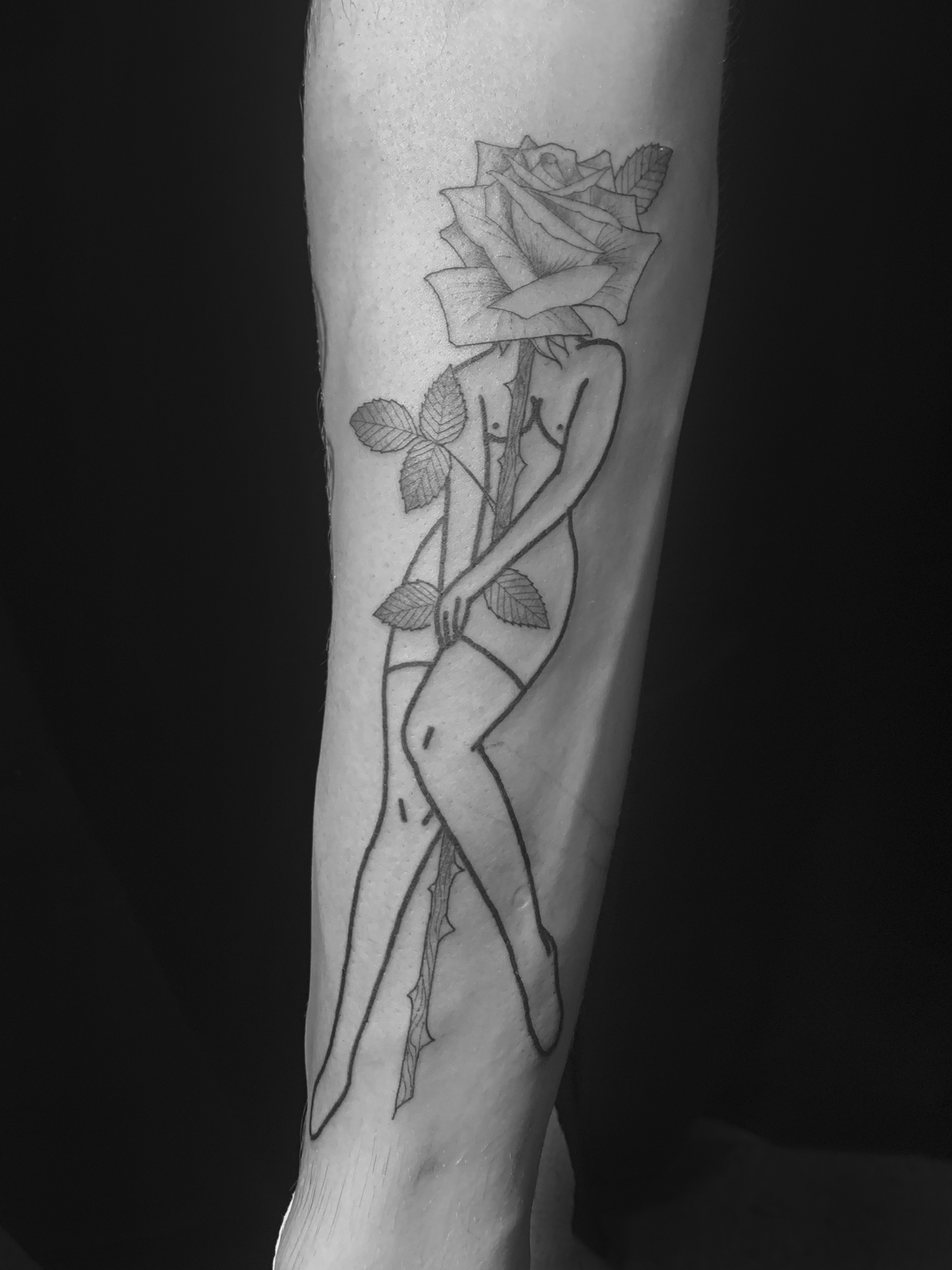
What about all-time favorite tattoo artists?
I was thinking the other day about how with Instagram and technology there are artists who are purely analog that I feel like the world has kinda forgotten. Before Instagram, Filip Leu was the undisputed Pope of tattooing. There’s so many things where even in my early years it would be like, “Oh, did you hear? Filip Leu runs his machines like this.” “Well shit, I’m going to run my machine like that.” I visited Filip Leu’s studio in the early 2000s, and the amount of material, and content. There’s going to be a day when someone digitizes his world, and it’s going to be like, “Oh, fuck.” It’s so immense and so expansive. When you scroll through Instagram now, you would have no idea what a huge influence he was on everything.
Finally, if you had to give a person considering their first tattoo one piece of advice, what would you say? I know what I would say, but I’d love to hear what you would say.
Just that you’re thinking about it too much. Just have fun. So many times people come in and they’re like, “Okay, it’s my first tattoo. I want to just dip my toe in there. I want to get something this big [Ed. note: Scott is holding his fingers approximately two inches apart], but I need it to summarize my entire being. I need something this big to have my cousin’s name and then a rose for my mom …” Just have fun. If the process of visualizing a tattoo and getting it is riddled with anxiety, then you’re going to see that anxiety when you look at it. If it’s just sweet and fun and it makes you smile, then you’ll always look at it and smile. The biggest mistake I see with first tattoos is people overthinking it because they’re afraid.
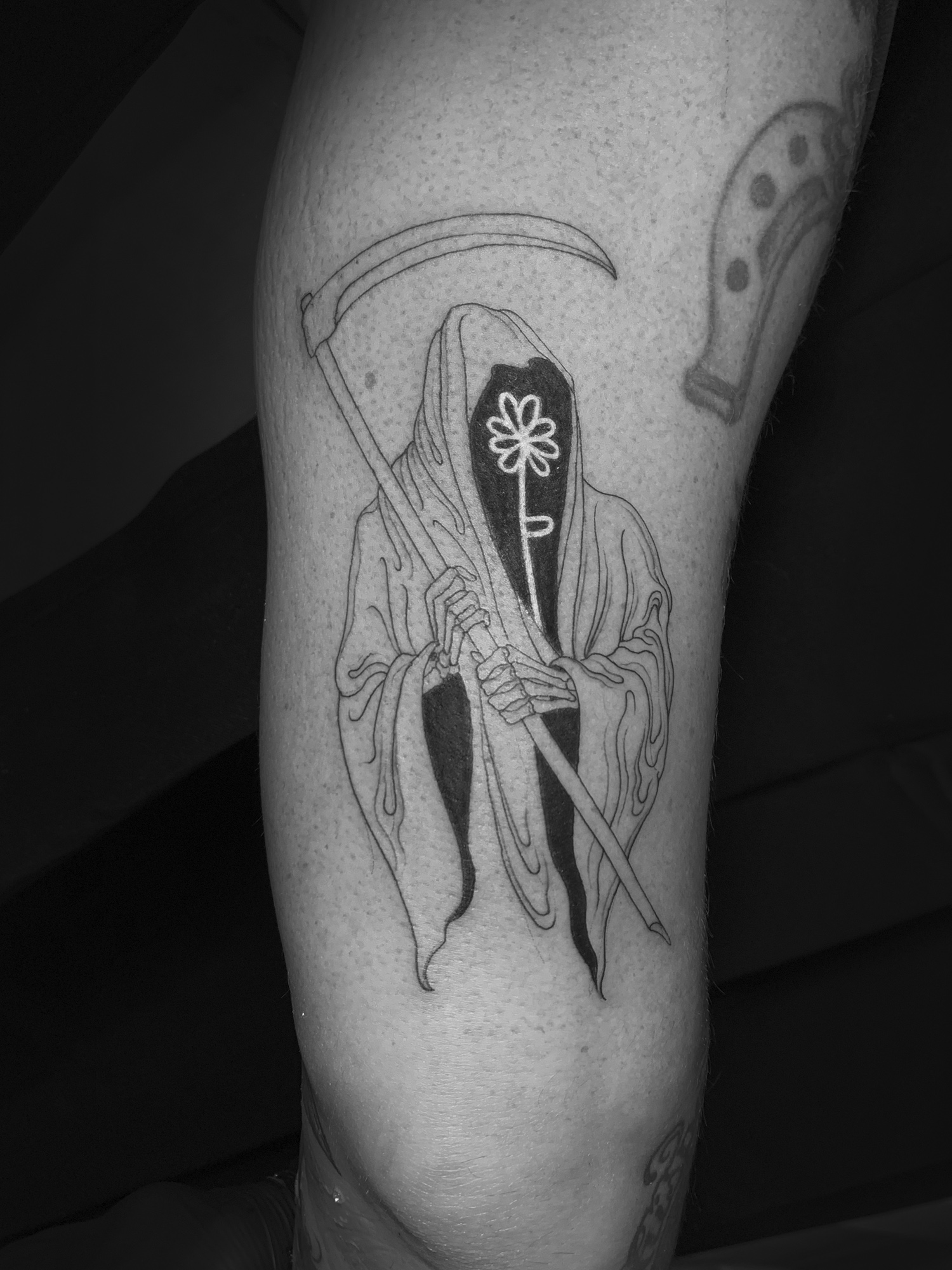
Yeah I was gonna say “It should be way bigger than you think it should be.”
Yeah. You see a lot of people nervous about crossing that line and the commitment of it. And it’s like … as if getting it small is getting half of a tattoo. It’s going to be a tattoo, so get the tattoo you’re psyched on and don’t pull your punches. You see that anxiety and then once you’ve gone through it one time you realize, “Oh, I’m still me. I still smell the same in the morning. There’s no difference.”

